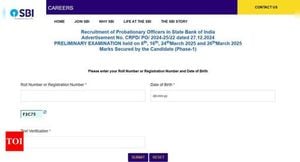As tensions rise over new tariffs imposed by the United States, Vietnamese officials are responding with a combination of caution and proactive measures. Dr. Nguyen Si Dung, a noted expert on international trade, emphasized that official data does not support claims that Vietnam imposes tariffs on U.S. goods reaching 90%. According to the U.S. Trade Representative's (USTR) 2024 Report on Foreign Trade Barriers, Vietnam's average Most-Favored-Nation (MFN) tariff stands at 9.4%, with agricultural goods taxed at 17.1% and non-agricultural goods at 8.1%.
Dr. Dung pointed out that Vietnam has been a member of the World Trade Organization (WTO) since 2007, binding all tariff lines in its commitments. This makes it difficult to find any tax line approaching the 90% mark. He stated, "The 90% figure seems more like an illustrative calculation rather than a legally accurate number." He suggested that this figure could be derived from summing various taxes and costs, including import duties, special consumption taxes, value-added tax (VAT), and administrative costs related to specific imported goods like alcohol and high-end foods.
Importantly, Dr. Dung noted that from an international trade law perspective, only direct import duties are classified as tariffs under WTO definitions; domestic taxes and administrative costs are categorized as non-tariff barriers. He argued that VAT and special consumption taxes, which are applied uniformly to both imported and domestic goods, cannot be considered protectionist or discriminatory.
In a broader context, Dr. Dung raised concerns about the implications of the U.S. using the 90% figure to justify imposing a 46% tax on Vietnamese goods. He questioned whether this approach aligns with international legal principles and WTO rules, stating, "If subjective quantification becomes common, the multilateral trading system risks instability, as any country could justify unilateral actions with unsubstantiated arguments."
Meanwhile, Dr. Can Van Luc, a member of the National Financial and Monetary Policy Advisory Council, expressed optimism regarding Vietnam's ability to navigate these challenges. He highlighted the government's decisive actions and policies in response to the U.S. tariff decision, which have been positively received by various sectors, including U.S. businesses.
Dr. Luc noted that the Vietnamese government is utilizing all available channels for negotiation and dialogue. "The government has directed the use of all channels for communication, negotiation, and persuasion," he said. Furthermore, Vietnam has proactively reduced tax rates on many goods and services imported from the U.S. and has increased imports from the U.S. through signed Memoranda of Understanding and contracts.
As the U.S. prepares to implement an additional 10% tax on all imports starting April 5, 2025, and potentially raise tariffs to 50% for about 59 countries, including Vietnam, Dr. Luc emphasized the need for Vietnam to build appropriate response scenarios. He stated, "We need to closely monitor developments, especially new moves from the U.S. government regarding tariffs and other related issues."
Dr. Luc believes that Vietnam still has room for negotiation, but time is of the essence. He suggested that the government and businesses need to prepare for various potential tariff levels, such as 25-30%, rather than the full 46%. He stated, "Countries that remain calm, proactive, and clever will successfully navigate this significant shock, minimizing negative impacts while seizing certain opportunities."
Moreover, Dr. Luc outlined several key points for Vietnam to focus on in negotiations. First, he emphasized the importance of clarifying to the U.S. that the economic, trade, and investment relationship between the two nations is mutually supportive. He also referenced the U.S. Trade Barriers report, which highlighted concerns in 14 areas that Vietnam must address to demonstrate goodwill and seriousness in resolving trade issues.
Additionally, Dr. Luc proposed that Vietnam could suggest raising the U.S. system coefficient from 0.25 to 0.5, which could significantly reduce the tax rate from 46% to approximately 30%. He emphasized that Vietnam needs to show that trade issues have been opened up and that it is committed to addressing U.S. concerns with specific timelines and solutions.
On the ground, Vietnam's Ministry of Industry and Trade has expressed serious concerns regarding the U.S. tariff decision. Mr. Ta Hoang Linh, the head of the Ministry's Department of Foreign Market Development, stated that the average MFN tax rate in Vietnam is currently 9.4%. He argued that the U.S. assessment of Vietnam imposing a 90% tariff is unfair and does not reflect Vietnam's efforts to address trade imbalances and build a sustainable trade relationship.
Mr. Linh pointed out that Vietnamese goods exported to the U.S. primarily compete with products from other countries, rather than directly with U.S. companies. He noted that this dynamic allows American consumers to access affordable Vietnamese products. The Vietnamese government has been proactive in addressing various challenges and has approved significant investment projects from major U.S. corporations in Vietnam.
As the situation develops, the Ministry of Industry and Trade is arranging discussions with U.S. officials to seek solutions. Mr. Linh emphasized the importance of fair trade practices and expanded opportunities for dialogue and cooperation between the two countries. He stated, "We hope the U.S. will implement fair trade practices and further expand opportunities for discussions and cooperation to ensure mutual benefits in trade and investment."
With the stakes high, both Vietnamese officials and experts are advocating for a strategic and measured approach to the unfolding trade situation, emphasizing the importance of cooperation, transparency, and mutual understanding to navigate the challenges posed by the new U.S. tariffs.






